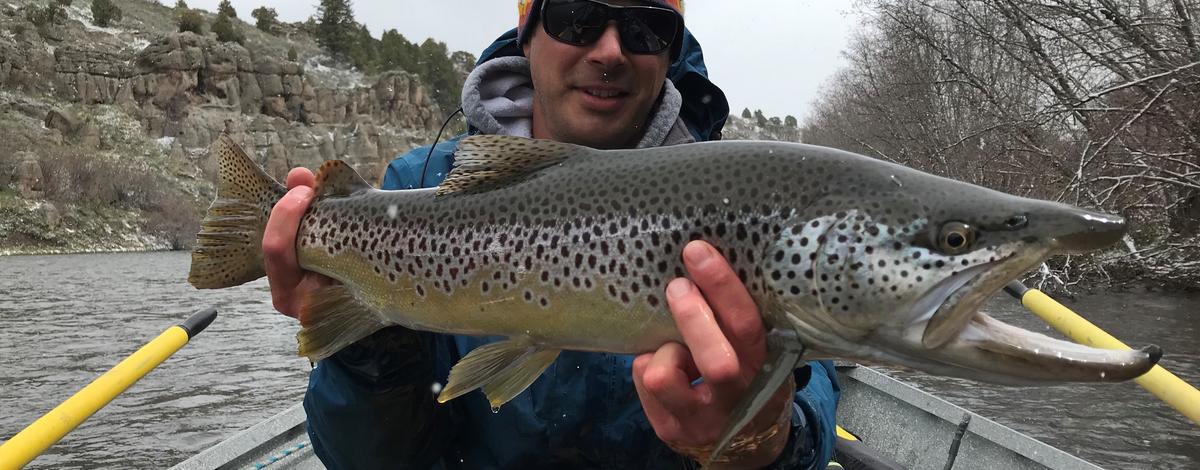Wild trout populations are resilient and can fluctuate from year to year based on growth, recruitment, and mortality in the fish population. Environmental factors like streamflow can affect the amount of in-stream habitat for fish, which ultimately can affect the amount of spawning and rearing habitat, as well as the amount of overwinter habitat. Overwinter habitat is generally the most limiting factor in regulating wild trout populations, especially in the Henrys Fork of the Snake River. Following an exceptional snow year in 2017, reservoir storage and natural streamflow contributed to a few years of good water supply and above average overwinter streamflow. This was reflected in above average trout abundances in most reaches of the Henrys Fork estimated in 2021, particularly in Box Canyon.
However, we just experienced the second winter in a row of below average snowpack, which will affect the natural streamflow, reservoir storage, and trout abundances for a couple more years. As such, we are beginning to see a decline in trout abundance in Box Canyon that will persist and likely stabilize. Despite the decrease in trout abundance, the size structure of trout in Box Canyon has increased between 2021 and 2022. We observed an increase in average total length of Rainbow Trout in Box Canyon by two inches between 2021 and 2022, and an overall increase in abundance of fish greater than 14 inches.
We also observed increases in the size structure of trout in the Vernon reach and an increase in trout abundance between 2018 and 2021.
The average total length of Brown Trout in the Vernon reach increased from 11.5 inches in 2018 up to 14 inches in 2021, and we captured more Brown Trout greater than 20 inches in the 2021 estimate. Additionally, the average total length of Rainbow Trout increased from 13 inches in 2018 up to 15 inches in 2021, but we captured fewer Rainbow Trout greater than 20 inches in 2021 compared to 2018. In the Chester to Fun Farm reach, we estimated a slight decline in abundance in 2021 compared to 2018, but the difference was not statistically significant and the trout abundance in Chester to Fun Farm has remained stable since 2015. The size structure of trout in the Chester reach has also changed. We calculated the average total length of Brown Trout in 2018 at 15 inches and at 14 inches in 2021, but the largest Brown Trout we sampled was 23 inches in both years. However, the average total length of Rainbow Trout remained the same between 2018 and 2021 at 14 inches, but the largest Rainbow Trout sampled in 2021 was 20 inches compared to 21 inches in 2018.
This year, we also conducted an abundance estimate in the Stonebridge reach of the Henrys Fork, which is also known as Warm River to Ashton. Trout abundance in this reach has remained stable since 2010 with minor increases and decreases among years.
Similar to the Vernon and Box Canyon reaches, we estimated increases in the average total length of both Brown and Rainbow trout. The average total length of Brown Trout this year was 14 inches with a maximum of 27 inches, compared to a 13.5 inch average in 2019 and a maximum of 23 inches. The Rainbow Trout average total length also increased from 11 inches in 2019 up to 12 inches in 2022, but the maximum length was the same both years at 18 inches.






